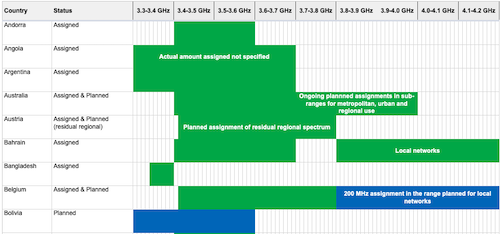3.3—4.2 GHz benchmark updated
The revised benchmark is based on our research into planned and actual assignments in this key mid-band spectrum over the past 18 months.
Countries around the world continue to make progress in assigning the band for IMTInternational Mobile Telecommunications (I…/5G use. There is also a growing number of nations that are earmarking spectrum for use on a localised basis.
Since PolicyTracker’s August 2021 3.3—4.2 GHz benchmark, eight nations have progressed from the planning stage to the assignment of spectrum in the range.
Twenty new countries have assigned or started planning to assign frequencies in the range, primarily for IMT/5G. Outside Europe, which accounts for 10 of these nations, it is notable that six of them are in Africa. Three of them are in the Americas and two are in the Asia Pacific.
Twenty-five nations continue to advance their assignments and planned assignments in the range.
While the assignment of spectrum resources in the range is now gaining traction in all regions of the world, there is a continued trend of wide variations in policy approaches both within regions and across countries even after years of harmonisation activities at the ITUThe International Telecommunication U… and in regional organisations.
Among regions, Europe is still in the lead in terms of 3.5 GHz assignments and assignment plans with concrete actions in 37 countries (43 per cent of the countries included in this benchmark).
The Asia Pacific and Americas follow, representing 21 per cent and 16 per cent of the total countries tracked in the benchmark.
The 3.3—4.2 GHz benchmark is available to Spectrum Research Service subscribers here.

